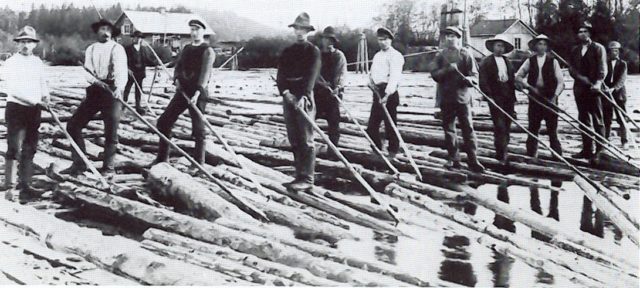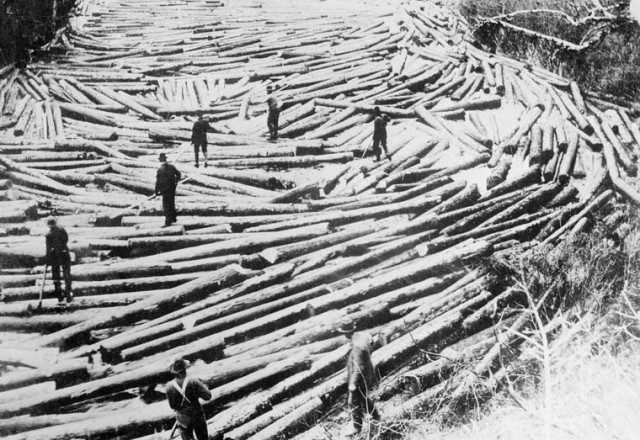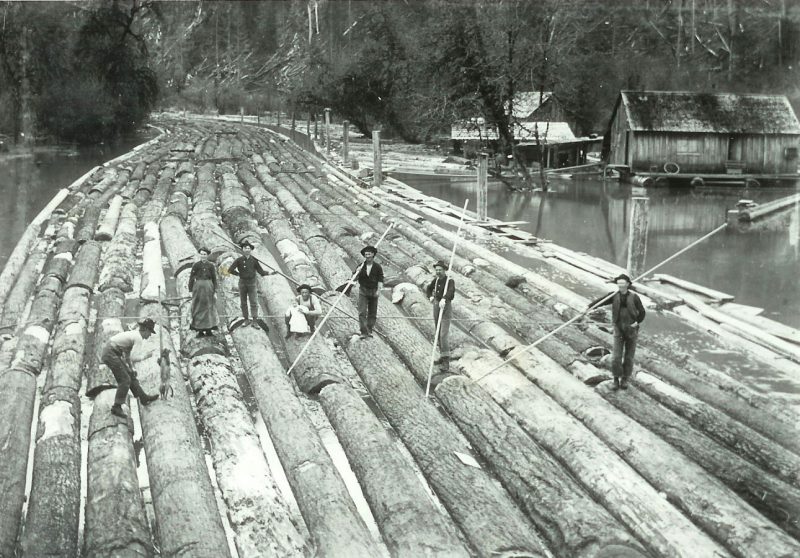During the glory years of logging in the 1800s, loggers in California were cutting down dozens of massive 700-year-old redwoods a day. They were hitched to oxen and dragged to a river, unhitched, then pushed into the river so they could float down to the nearest riverside sawmill. Hardwood logs could not float, so they were strapped to rafts and sent down the river in that way.

Some of these logs would either get snagged or become waterlogged and then would sink. Once they sink, the logs begin to age and are preserved. The minerals in the water play a big part in the coloration of the lumber.
While they lay at the bottom of the river, the logs were protected from their worst enemies; oxygen, sunlight, and pests. But now, after all these centuries, these forgotten pieces of history are being brought up for use. Deadhead logs are some of the most prized pieces of lumber around; they are used for flooring and paneling because of their rich color and interesting grain patterns.
“I’m finishing what another logger started maybe 200 years ago. I love the history behind it,” said logger Travis French.
DeadHead Lumber Company was created for the specific purpose of dredging up these sunken beauties that lay in Maine’s rivers and lakes. Some of these logs even date back to the 1600s. Many of the hardwood logs were sunk because they had to be strapped to rafts which then sunk.

Lakes and rivers were the highways for logs back then. It is estimated that in North America, that for every ten logs that were sent down these highways, one of them sank to the bottom.
The logging operations would take place every spring from the 1770s all the way up until the mid-1900s. Most of these traveled down the Penobscot River, which became not only the most important river in Maine, but one of the most important rivers in the world. When the water was fast and high, the logs would begin to jam up and when it was the opposite they would slow and beach themselves on rocks. Today, these same logs are a hazard to fishermen and boats traveling down the river.
Senator Tommie Williams says that when you bring these logs up, you are paying tribute to the men of the past that put in the backbreaking work to bring these trees down. Williams’ family had four generations of loggers who used axes and crosscut saws to fell these giant trees.

These logs were sometimes 1,200-year-old cypress trees that grew in isolated swamps, and longleaf pine that were close to the same age. “It’s really a treasure,” Williams said. “The quality of the wood and the uniqueness of the wood is something we can’t duplicate. There really aren’t any virgin forests left.”
Williams’ family used to tie the logs together on rafts and send them down the Altamaha to the port in Darien, where they would be loaded onto ships that were waiting at the harbor. “In its heyday, they say you could walk for miles on the river on rafts waiting to be loaded,” he said.
At the bottom of the rivers the logs will be stripped of their bark and become slimy, but the wood is perfectly preserved and can be used for almost anything you want.
